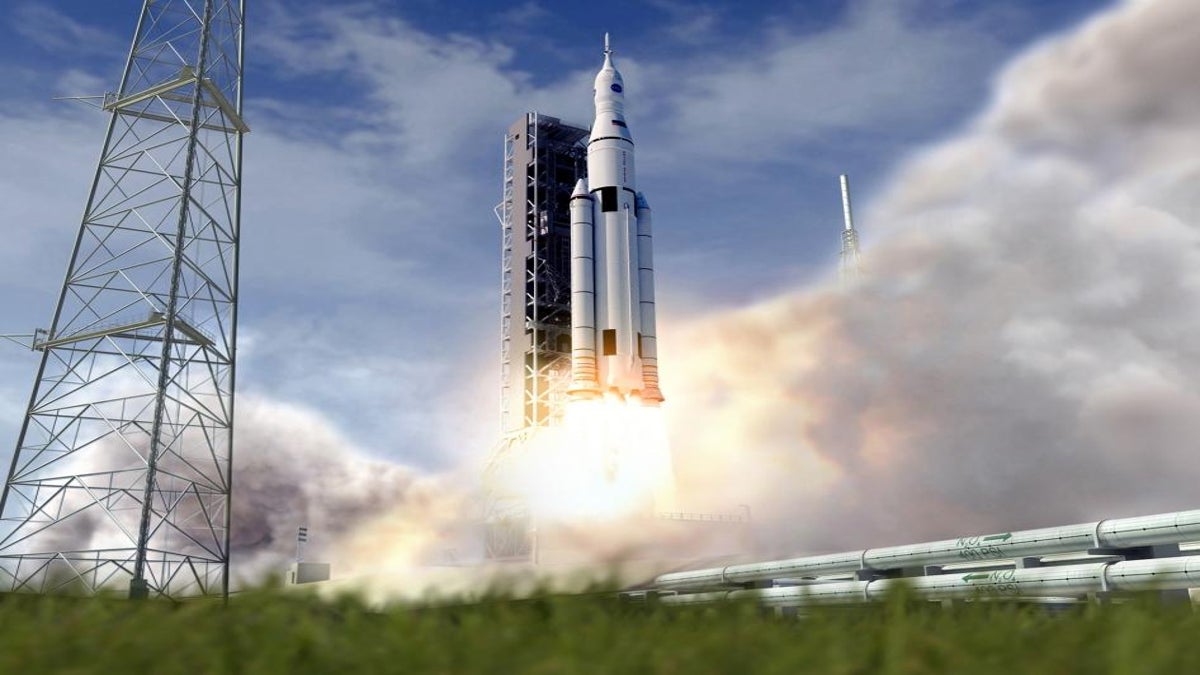NASA balks at billionaire's request for Mars mission aid
First "space tourist" Dennis Tito asks agency to chip in with some new rockets and cash for a 2017 manned mission. NASA says thanks, but no thanks.

Earlier this year, billionaire Dennis Tito -- best known as the first "space tourist" who paid his way onto the International Space Station in 2001 -- laid out his audacious plan for a manned fly-by of Mars.
There was just one catch: the mission would need to launch in late 2017 to take advantage of a rare alignment of the planets that would greatly shorten the trip, or maybe in 2021, the second best option.
Then on Wednesday Tito went before the House Science Subcommittee on Space during a hearing on commercial space to share the findings of a study into the proposed mission and reveal another catch: Tito needs to borrow NASA's new Space Launch System (SLS), which is currently still under development, and have the federal government foot part of the bill.
Here's how Tito's nonprofit Inspiration Mars Foundation described the plan in a press release on Wednesday:
First, the SLS will lift off from Kennedy Space Center with a four-part payload to place cargo into Earth's orbit, consisting of: an SLS upper-stage rocket to propel spacecraft from Earth's orbit to Mars; a service module containing electrical power, propulsion and communication systems; a Cygnus-derived habitat module where the astronauts will live for 501 days; and an Earth Reentry Pod derived from Orion. The second launch will take the crew into orbit aboard a commercial transportation vehicle (selected from competing designs under NASA's Commercial Crew Program). From there, the crew and Inspiration Mars vehicle stack will rendezvous in orbit using docking procedures perfected by more than 130 trips to the International Space Station.
Once everything is in place above Earth, the SLS upper-stage rocket then launches it all toward Mars for an 808-million-mile, 501-day round-trip journey.
NASA is currently working toward an objective of manned missions to Mars sometime in the 2030s, which is also roughly how long we'd have to wait until the special planetary alignment Tito hopes to seize four years from now will come around again. This begs the question, why not just stick to the timeline already approved for the space agency and blast off to the Red Planet then, without all the rush?
Tito had this to say about the question of waiting in his testimony:
If I may offer a frank word of caution to this subcommittee: The United States will carry out a Mars flyby mission, or we will watch as others do it - leaving us to applaud their skill and their daring. If America is ever going to do a flyby of Mars - a manned mission to another world - then 2018 is our last chance to be first.
NASA later issued a response to Tito's proposal, in the form of an e-mailed statement from David Weaver, associate administrator for the Office of Communications at the agency. When translated from the bureaucratic niceties into conversational English, it's roughly the equivalent of a dismissive "whatever, dude" delivered while walking away. Here's the key excerpt with the actual rejection:
Inspiration Mars' proposed schedule is a significant challenge due to life support systems, space radiation response, habitats, and the human psychology of being in a small spacecraft for over 500 days. The agency is willing to share technical and programmatic expertise with Inspiration Mars, but is unable to commit to sharing expenses with them.
So that's what it looks like when a billionaire gets snubbed.
The odds on a human Martian fly-by by the end of the decade are not looking good, unless Tito finds some dynamite lobbyists to convince Congress to pony up several hundred million for his plan. But at this point, I'd say Kickstarter is a better bet.

